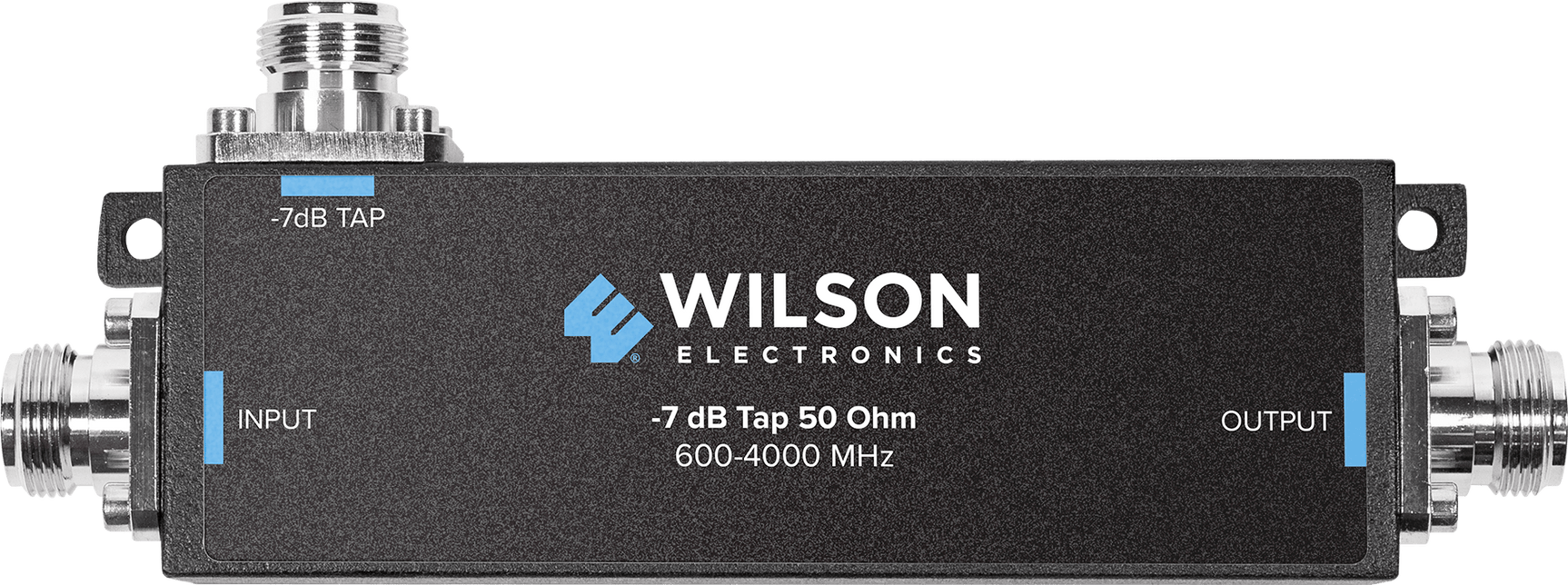Wilson -7 dB Tap 600-4000 MHz 50 Ohm | 859120
90-Day Returns • Free Shipping $100+ • 2-Year Warranty
How to Choose the Right Antennas for Your Booster
Outside Antennas:
- Yagi Directional Antenna: This antenna is more powerful because it focuses on sending and receiving signals in one direction. It works best when there are no major obstacles blocking its path to the cell tower. It's not ideal for areas with large obstructions like hills or buildings.
- Omni Antenna: This antenna sends and receives in all directions, so it's better for hilly areas or if you need to support multiple carriers with towers in different directions. It doesn’t need to be aimed, but it also isn’t as strong as the Yagi antenna.
- High Gain LPDA Antenna: Perfect for areas with very weak signals, this antenna significantly boosts signal strength. It needs a clear line of sight to the cell tower and requires a sturdy mount because of its size.
- High Gain Omni Antenna: Similar to the standard omni, this antenna receives signal from all directions but delivers significantly higher gain across all supported bands. It’s a much stronger option when you want more inside coverage than a standard omni will provide, especially in areas with weaker outside signal.
Inside Antennas:
- Panel Antenna: Can be placed on walls or ceilings and directs the signal towards a specific area. This antenna is great for homes and tall ceilings in buildings.
- Standard Dome Antenna: Designed to be mounted on the ceiling, this antenna spreads the signal evenly throughout the area. It's best suited for drop ceilings or spaces where cables can be run above the ceiling.
- Ultra-Thin Dome Antenna: This slim antenna also mounts to the ceiling, but is much is less noticeable. It's much stronger than a standard dome antenna, making it a great choice for places where both looks and signal strength are important.
Tips for Choosing:
- Choose Omni Antennas for general coverage with no aiming required.
- Choose Directional Antennas (Yagi or LPDA) when you can point directly at a cell tower and need stronger signal and more inside coverage.
- Interior Size Considerations: One antenna per 750-1,500 sq ft in homes, or 1,500-2,500 sq ft in open spaces like offices and warehouses.
Product Overview
Product Overview
Experience enhanced network reliability and coverage with the Wilson -7 dB Tap. Designed to operate across a broad frequency range from 600 to 4000 MHz, this device ensures consistent performance in various environments, making it ideal for both indoor and outdoor applications.
- Frequency Range: 600-4000 MHz, supporting diverse network standards including 2G, 3G, 4G, LTE, and 5G for comprehensive coverage.
- Coupling: 7 dB, optimized for efficient signal distribution with minimal loss.
- Insertion Loss: ≤1.5 dB, maintaining signal strength and quality.
- Isolation: High isolation levels, offering excellent separation across multiple frequency bands.
- VSWR: Low VSWR of ≤1.30 (600-2700 MHz) and ≤1.35 (2700-6000 MHz), ensuring superior signal integrity.
- Power Handling: Capable of handling up to 200 Watts per port, suitable for high-power applications.
This tap is IP65 rated, signifying its dust-tight design and resistance to water, making it a reliable choice for various environmental conditions. Its compact build and powerful performance align to provide a robust solution for enhancing cellular coverage in any setting.
Product Documents
Product Documents
Specifications
Specifications
-
SKU859120
-
UPC810005964319
-
ConditionNew
-
Impedance
-
ConnectorN-Female
-
Cable Loss

